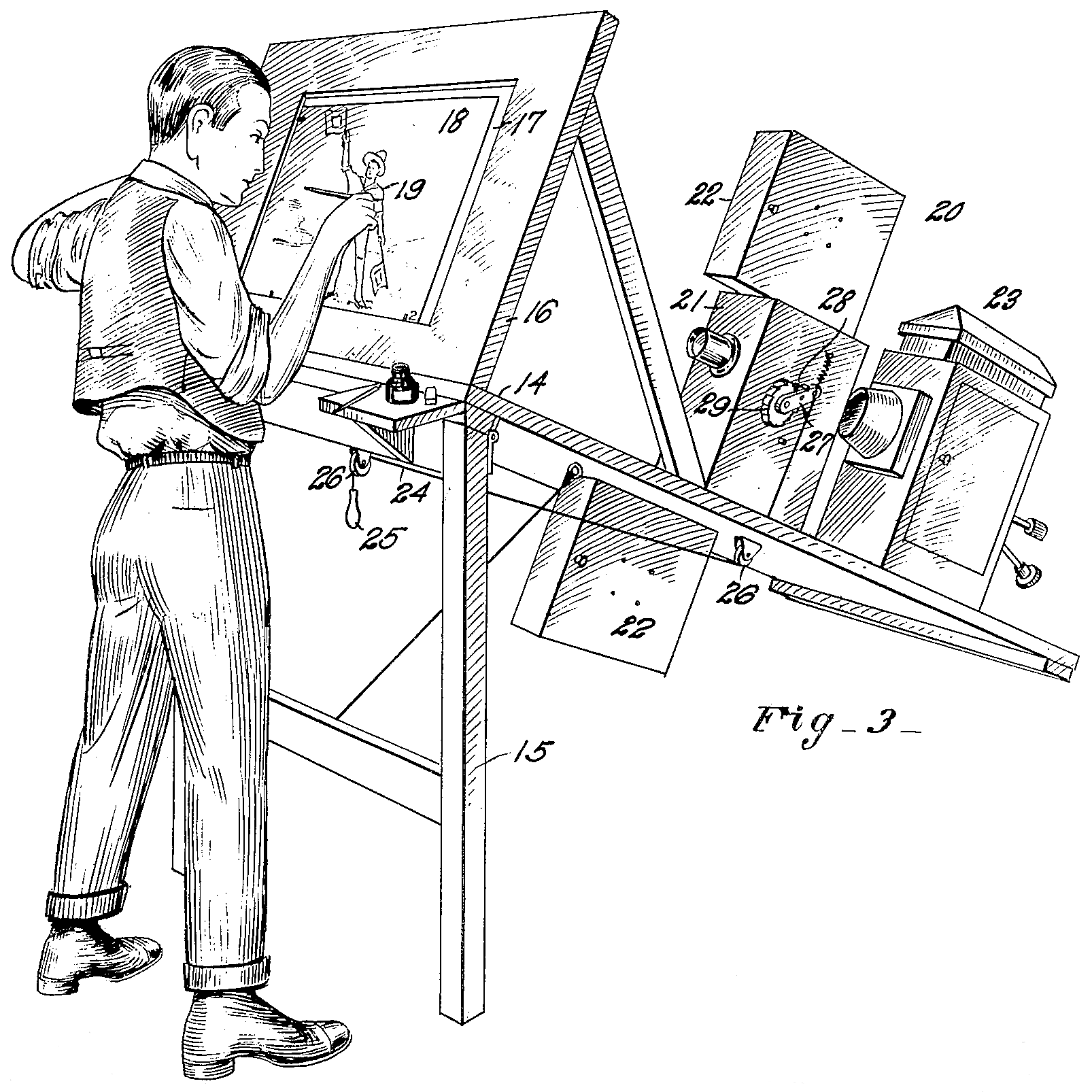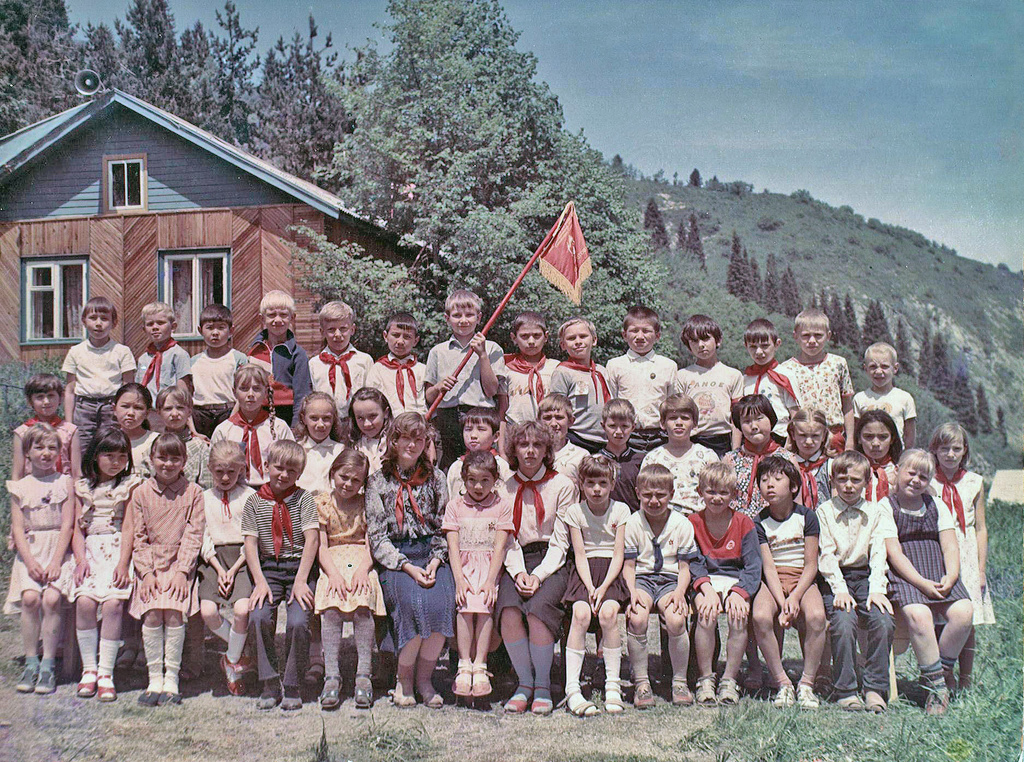|
Boris Stepantsev
Boris Pavlovich Stepantsev (russian: Борис Павлович Степанцев; 7 December 1929 — 21 May 1983) was a Soviet and Russian animation director, animator, artist and book illustrator, as well as a vice-president of ASIFA (1972–1982) and creative director of the Multtelefilm animation department of the Studio Ekran (1980–1983). Honored Artist of the RSFSR (1972).'' Giannalberto Bendazzi (2016)''Animation: A World History: Volume II: The Birth of a Style - The Three Marketsat Google Books, p. 287, 77''Sergei Kapkov (2006)''. Encyclopedia of Domestic Animation. — Moscow: Algorithm, p. 615—616 Biography As a child Boris Stepantsev (born Stepantsov) fell in love with animated films "because there was nothing funnier in the whole world"''Sergei Asenin (1983)''. The Wisdom of Fiction: Masters of Animation about Themselves and Their Art. — Moscow: Iskusstvo, p. 155-159 and decided to dedicate his life to comedy animation. He graduated from the Moscow Art School ... [...More Info...] [...Related Items...] OR: [Wikipedia] [Google] [Baidu] |
Moscow
Moscow ( , US chiefly ; rus, links=no, Москва, r=Moskva, p=mɐskˈva, a=Москва.ogg) is the capital and largest city of Russia. The city stands on the Moskva River in Central Russia, with a population estimated at 13.0 million residents within the city limits, over 17 million residents in the urban area, and over 21.5 million residents in the metropolitan area. The city covers an area of , while the urban area covers , and the metropolitan area covers over . Moscow is among the world's largest cities; being the most populous city entirely in Europe, the largest urban and metropolitan area in Europe, and the largest city by land area on the European continent. First documented in 1147, Moscow grew to become a prosperous and powerful city that served as the capital of the Grand Duchy that bears its name. When the Grand Duchy of Moscow evolved into the Tsardom of Russia, Moscow remained the political and economic center for most of the Tsardom's history. Whe ... [...More Info...] [...Related Items...] OR: [Wikipedia] [Google] [Baidu] |
Stop Motion
Stop motion is an animated filmmaking technique in which objects are physically manipulated in small increments between individually photographed frames so that they will appear to exhibit independent motion or change when the series of frames is played back. Any kind of object can thus be animated, but puppets with movable joints (puppet animation) or plasticine figures (''clay animation'' or claymation) are most commonly used. Puppets, models or clay figures built around an armature are used in model animation. Stop motion with live actors is often referred to as pixilation. Stop motion of flat materials such as paper, fabrics or photographs is usually called cutout animation. Terminology The term "stop motion", relating to the animation technique, is often spelled with a hyphen as "stop-motion". Both orthographical variants, with and without the hyphen, are correct, but the hyphenated one has a second meaning that is unrelated to animation or cinema: "a device for automat ... [...More Info...] [...Related Items...] OR: [Wikipedia] [Google] [Baidu] |
Live-action Animated Film
A live-action animated film is a film that combines live action filmmaking with animation. Films that are both live-action and computer-animated tend to have fictional characters or figures represented and characterized by cast members through motion capture and then animated and modeled by animators. Films that are live action and traditionally animated use hand-drawn, computer-generated imagery (CGI) or stop motion animation. History Origins of combining live-action and animation During the silent film era in 1920s and 1930s, the popular animated cartoons of Max Fleischer included a series in which his cartoon character, Koko the Clown, interacted with the live world; for example, having a boxing match with a live kitten. In a variation from this and inspired by Fleischer, Walt Disney's first directorial efforts, years before Oswald the Lucky Rabbit was born in 1927 and Mickey Mouse in 1928, were the live-action animated '' Alice Comedies'' cartoons, in which a young liv ... [...More Info...] [...Related Items...] OR: [Wikipedia] [Google] [Baidu] |
Annecy International Animation Film Festival
The Annecy International Animation Film Festival (french: Festival international du film d'animation d'Annecy, officially abbreviated in English as the Annecy Festival, or simply Annecy) was created in 1960 and takes place at the beginning of June in the town of Annecy, France. Initially occurring every two years, the festival became an annual event in 1998. It is one of the four international animated film festivals sponsored by the International Animated Film Association (french: Association internationale du film d'animation, or ASIFA). The festival is a competition between animated films of various techniques (traditional A tradition is a belief or behavior (folk custom) passed down within a group or society with symbolic meaning or special significance with origins in the past. A component of cultural expressions and folklore, common examples include holidays or ..., cut-outs, claymation, 3DCG, etc.) classified in various categories: * Feature films * Short films * ... [...More Info...] [...Related Items...] OR: [Wikipedia] [Google] [Baidu] |
Rotoscopy
Rotoscoping is an animation technique that animators use to trace over motion picture footage, frame by frame, to produce realistic action. Originally, animators projected photographed live-action movie images onto a glass panel and traced over the image. This projection equipment is referred to as a rotoscope, developed by Polish-American animator Max Fleischer, and the result is a rotograph. This device was eventually replaced by computers, but the process is still called rotoscoping. In the visual effects industry, ''rotoscoping'' is the technique of manually creating a matte for an element on a live-action plate so it may be composited over another background. Chroma key is more often used for this, as it is faster and requires less work, but rotoscopy provides a higher level of accuracy and is often used in conjunction with chroma-keying. It may also be used if the subject is not in front of a green (or blue) screen, or for practical or economic reasons. Technique ... [...More Info...] [...Related Items...] OR: [Wikipedia] [Google] [Baidu] |
History Of Russian Animation
The history of Russian animation is the visual art form produced by Russian animation makers. As most of Russia's production of animation for cinema and television were created during Soviet times, it may also be referred to some extent as the history of Soviet animation. It remains a nearly unexplored field in film theory and history outside Russia. Beginnings The first Russian animator was Alexander Shiryaev, a principal ballet dancer and choreographer at the Mariinsky Theatre who made a number of pioneering stop motion and traditionally animated films between 1906 and 1909. He built an improvised studio at his apartment where he carefully recreated various ballets — first by making thousands of sketches and then by staging them using hand-made puppets; he shot them using the 17.5 mm Biokam camera, frame by frame. Shiryaev didn't hold much interest in animation as an art form, but rather saw it as an instrument in studying human plastics. Lord, PeterThe start of stop-fr ... [...More Info...] [...Related Items...] OR: [Wikipedia] [Google] [Baidu] |
Tex Avery
Frederick Bean "Tex" Avery (February 26, 1908 – August 26, 1980) was an American animator, cartoonist, director, and voice actor. He was known for directing and producing animated cartoons during the golden age of American animation. His most significant work was for the Warner Bros. and Metro-Goldwyn-Mayer studios, where he was crucial in the creation and evolution of famous animated characters such as Bugs Bunny, Daffy Duck, Porky Pig, Elmer Fudd, Droopy, Screwy Squirrel, The Wolf, Red Hot Riding Hood, and George and Junior. He gained influence for his technical innovation, directorial style and brand of humor. Avery's attitude toward animation was opposite that of Walt Disney and other conventional family cartoons at the time. Avery's cartoons were known for their sarcastic, ironic, absurdist, irreverent, and sometimes sexual tone in nature. Avery's cartoon focused on sight gags, surrealist humor, rapid pacing, racial stereotypes, and violent humor, with wacky c ... [...More Info...] [...Related Items...] OR: [Wikipedia] [Google] [Baidu] |
Evgeny Raykovsky
Yevgeni, Yevgeny, Yevgenii or Yevgeniy (russian: Евгений), also transliterated as Evgeni, Evgeny, Evgenii or Evgeniy, is the Russian form of the masculine given name Eugene. People with the name include: :''Note: Occasionally, a person may be in more than one section.'' Arts and entertainment * Yevgeny Aryeh (1947–2022), Israeli theater director, playwright, scriptwriter and set designer *Yevgeni Bauer (1865–1917), Russian film director and screenwriter * Yevgeni Grishkovetz (born 1967), Russian writer, dramatist, stage director and actor *Evgeny Kissin (born 1971), Russian pianist *Yevgeny Leonov (1926–1994), Soviet and Russian actor *Yevgeni Mokhorev (born 1967), Russian photographer * Evgeny Mravinsky (1903–1988), Russian conductor *Evgeny Svetlanov (1928–2002), Russian conductor * Yevgeni Urbansky (1932–1965), Soviet Russian actor *Yevgeniy Yevstigneyev (1926–1992), Soviet and Russian actor *Yevgeny Yevtushenko (1933–2017), Soviet and Russian poet *Yevgeny ... [...More Info...] [...Related Items...] OR: [Wikipedia] [Google] [Baidu] |
Little Red Riding Hood
"Little Red Riding Hood" is a European fairy tale about a young girl and a sly wolf. Its origins can be traced back to several pre-17th century European folk tales. The two best known versions were written by Charles Perrault and the Brothers Grimm. The story has been changed considerably in various retellings and subjected to numerous modern adaptations and readings. Other names for the story are: "Little Red Cap" or simply "Red Riding Hood". It is number 333 in the Aarne–Thompson classification system for folktales. Tale The story revolves around a girl called Little Red Riding Hood. In Perrault's versions of the tale, she is named after her red hooded cape/cloak that she wears. The girl walks through the woods to deliver food to her sickly grandmother (wine and cake depending on the translation). In the Grimms' version, her mother had ordered her to stay strictly on the path. A stalking wolf wants to eat the girl and the food in the basket. He asks her where sh ... [...More Info...] [...Related Items...] OR: [Wikipedia] [Google] [Baidu] |
Pioneer Movement
A pioneer movement is an organization for children operated by a communist party. Typically children enter into the organization in elementary school and continue until adolescence. The adolescents then typically join the Young Communist League. Prior to the 1990s there was a wide cooperation between pioneer and similar movements of about 30 countries, coordinated by the international organization, '' International Committee of Children's and Adolescents' Movements'' (french: Comité international des mouvements d'enfants et d'adolescents, CIMEA), founded in 1958, with headquarters in Budapest, Hungary. Overview During the Russian Civil War from 1917 to 1921, most of the Russian Scoutmasters and many Scouts fought in the ranks of the White Army against the Red Army. Between 1918 and 1920, the All-Russian Congresses of the Russian Union of the Communist Youth ( Komsomol) decided to eradicate the Scout movement and create an organization of the communist type, that would take Sov ... [...More Info...] [...Related Items...] OR: [Wikipedia] [Google] [Baidu] |
Vladimir Suteev
Vladimir Grigorevich Suteev (russian: Владимир Григорьевич Сутеев) (5 July 1903 – 10 March 1993) was a Russian author, artist and animator who primarily wrote stories for children. He was among the founders of the Soviet animation industry. Suteev's books have been translated into 36 languages and published in countries such as Norway, France, Mexico, Yugoslavia, Czechoslovakia, India and Japan. Early years Vladimir Suteev was born in Moscow into a family of Zinaida Vasilievna Suteeva and Grigory Osipovich Suteev (1879–1960), a prominent Russian physician, dermatologist, mycologist, one of the leading actinomycosis researches who served as the head of the venereology section at the Moscow Department of Healthcare during the Soviet days.''Irina Klueva, Nadezhda Lysova (2008)''Works of Stepan Erzia in Saransk Museums — Saransk: Mordovian State University, 291 pages, p. 37 A graduate of the Imperial Moscow University, Grigory Suteev was also pr ... [...More Info...] [...Related Items...] OR: [Wikipedia] [Google] [Baidu] |






